|
|
Post by nicollas on Mar 13, 2014 4:58:05 GMT -5
Phaseolus ritensis is also in the Polystachios Group according to that paper above. Maybe an interspecific crossed-up genepool would provide compatibility to make a cross with P. coccineus? Sorry i've overlooked the P. ritensis. You right it can be an important specy as a bridge from P. polystachios towards P. lunatus (and P. coccineus ?). Hybrids between P. ritensis and P. lunatus have been created with a much more success than P. polystachios (~10% in best conditions). So considering how P. ritensis and P. polystachios are close, i think another way to breed more fertile hybrids or restore fertility is to try to cross P. lunatus (♀) x (P. polystachios x P. ritensis) or try a (P. ritensis (♀) x P. lunatus) x P. polystachios (♂) cross This project becomes more an more interesting (and difficult) with time. |
|
|
|
Post by nicollas on Mar 13, 2014 14:18:24 GMT -5
To follow the way of the (P. ritensis x P. lunatus) x P. polystachios cross : Similarity of pollen :  (crosses with nb of univalents of 6 or more need doubling chromosome to restore fertility) On the P. ritensis x P. lunatus cross :   So P. ritensis could be a good bridge for P. lunatus and P. polystachios. But i have found no info on crosses between P. polystachios and P. ritensis for now. They seem close on the philogenic tree or the dendogram of electrophoretic patterns cited previously. Maybe the crosses are easier (due to closer genetic) but the offspring are as sterile because of pollen differences (P.ritensis and P. lunatus are of group I whereas P. polystachios is of group II) ? |
|
|
|
Post by nicollas on Mar 13, 2014 14:24:11 GMT -5
And just because it is interesting, what desirable traits can P. ritensis and P. polystachios bring to the genepool :   |
|
|
|
Post by nicollas on Apr 2, 2014 2:31:36 GMT -5
On the result of the cross :   So they can be perennial hybrids with high pod yield and perennial hybrids with short day, interesting ... |
|
|
|
Post by nicollas on Apr 12, 2014 1:13:20 GMT -5
|
|
|
|
Post by nicollas on Jun 28, 2014 0:22:17 GMT -5
I may have find a person with skills in colchicine treatment that could be very useful to restore fertility in hybrid if only i'll got a successful cross one day. It seems to have other techniques that could induce polyploids not involving hazardous chemicals. Decapitation of shoot tip and removal of all axillary buds can lead to shoots of polyploid type. For know i'm in search of any info specifically on phaseolus (involving or not colchicine). I have now to different accessions of P. polystachios, some 10 individuals each. One seedling is 1 m hight now. If it happens you have some wild population near your home, i'm interested by some seeds, as a different genetic from one of the specy could lead to very different results (or just success instead of failure) 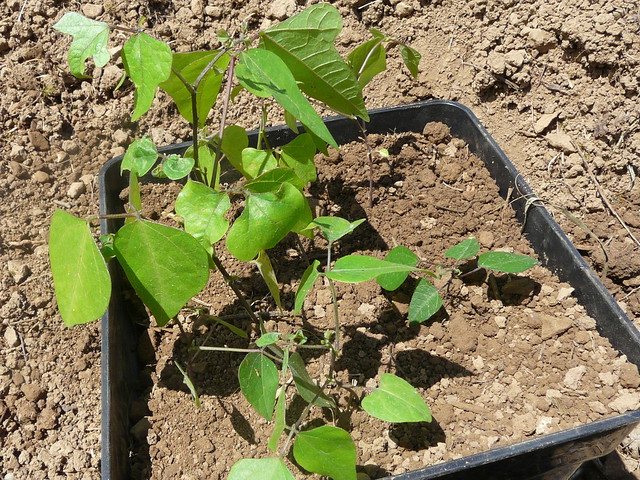 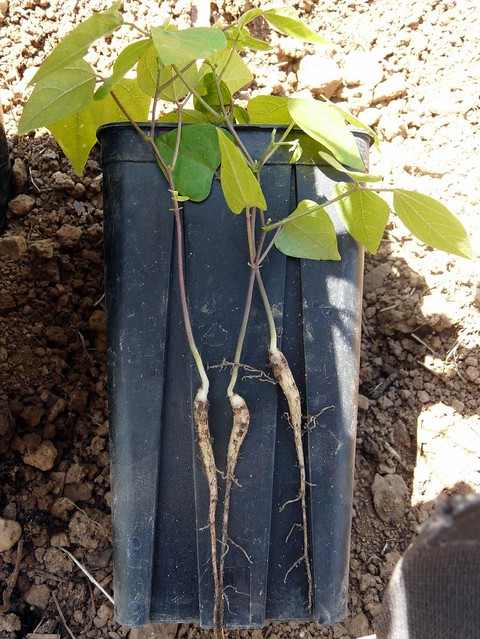 |
|
|
|
Post by nicollas on Nov 4, 2014 2:36:31 GMT -5
A little update from the polystachios front  So now i've got some plants in pots. Only one accession from Florida and one from northern state, so i cannot make conclusion here, but the leaves are clearly different, the sourthern having a more pronounced shape (dont know the exact english term for that), and seeds of different color. So i think there are two different subspecies. Northern accession : 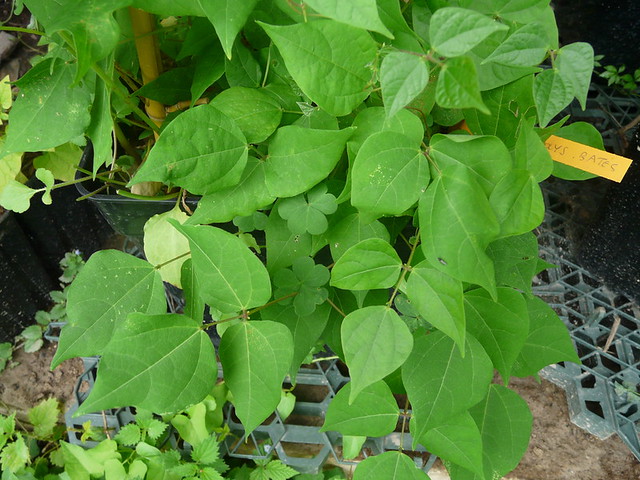 Sourthern accession (Florida indeed) : 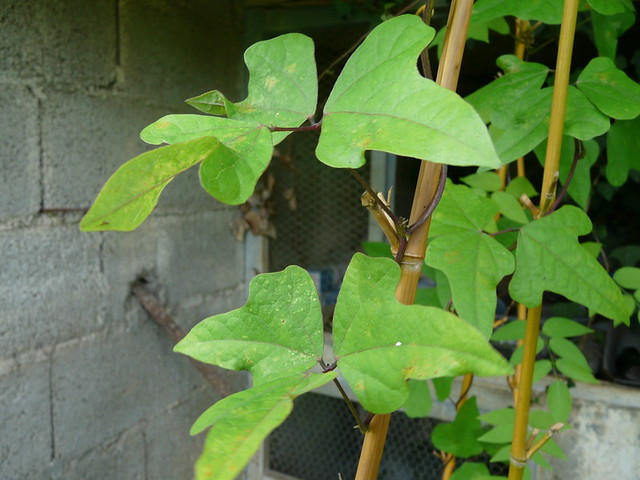 Flowers & pods from southern accession : 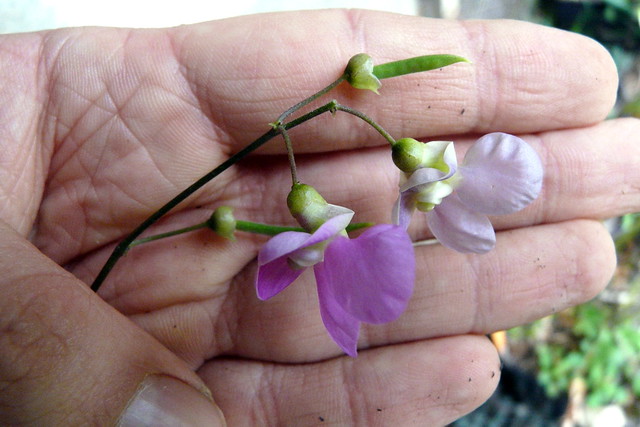 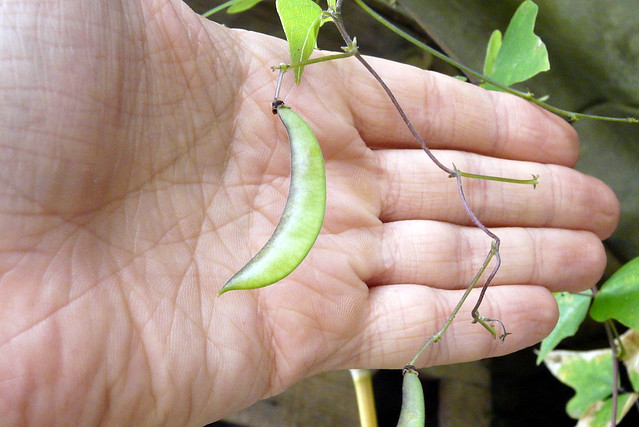 I dont think the pods will have time to mature before frost ? I've read in some article about distant crossing that it is worth trying different genetic stock as parents because some may be more compatible than others. Maybe it is already the case with the Lunatus as in the experiment leading to the second known cross, the only lunatus that produced hybrids was the Fordhook, which was used for the first cross too. But maybe using Florida strains could lower the cold hardiness of the hybrids... So i'm still in search of the max diversity in germplasm, so i'm interested by any local strain from north american users of the board (a member already sent me seeds from his locality, thanks again !) The two strains sown this year made flowers, so i should have flowers next year too, so i'll be in the pollination phase  |
|
|
|
Post by philagardener on Nov 4, 2014 7:01:48 GMT -5
Very pretty  ! That looks like nice progress, and the difference in foliage is intriguing. Any chance you can get pot that plant up and transfer it into a greenhouse to let it finish maturing that pod? You may want to trim new flowers, etc. to channel resources to the developing seeds. Good luck! |
|
|
|
Post by nicollas on Nov 4, 2014 7:06:58 GMT -5
I guess i can bring it to home but most of the foliage is dry. This is just plain polystachios so they are no imperial needs for these seeds, just increase the stock
|
|
|
|
Post by nicollas on Nov 21, 2014 11:27:07 GMT -5
I finally found some info on colchicine treatment to induce polyploidy in phaseolus :
Can someone with more knowledge than me could explain me ? It seems to have two treatments, first "Colchicine treatment was applied to vigorous shoot cuttings" and second "the cut ends placed in a 0.1 % solution of colchicine for 6-8 hours" or am i understanding the statement in the wrong way ? If not, isnt weird that they do not describe the first treatment (what part, how much time, what concentration) ?
|
|
|
|
Post by philagardener on Nov 21, 2014 18:41:45 GMT -5
It sounds like they are loading the vegetative shoot with the chemical much as a cut white carnation will take up food coloring (coloring the petals). This would deliver colchicine through the vascular system as water is drawn up to replace that lost by transpiration; this gets around the barrier of the waxy epidermal surface. Rooting the cutting in a mist propagator would trap the loaded colchicine in the shoot as the cut end heals and roots form. (Some workers do apply colchicine directly to shoot tips as a paste, which might apply to that first part but it isn't that specific.)
Colchicine interferes with cell division so some cells in the cutting meristems will wind up with multiple chromosomal sets (polyploidy) and that trait can be passed on when flowers generated from those cells set selfed seed. Colchicine solutions are be toxic, so please handle with care!
|
|
|
|
Post by nicollas on Nov 22, 2014 3:05:07 GMT -5
So you understood like me, that they cut the shoot and they soak the cut end in the colchicine; and not that they apply colchicine on the shoot tip and then cut and deep into colchicine a second time
|
|
|
|
Post by nicollas on Dec 18, 2014 11:15:50 GMT -5
Found that :
I wonder if that means that some amphidiploids were spontaneous and not induced ?
|
|
andyb
gardener
  
Posts: 179
|
Post by andyb on Dec 25, 2017 23:36:49 GMT -5
nicollas any updates on this project? I just received some P. polystachios in trade and am planning to attempt crosses between it and P. acutifolius and P. coccineus this winter. By the way, thanks for posting all the links to / snippets from the papers you found.
|
|
|
|
Post by walt on Dec 28, 2017 14:15:51 GMT -5
Some people on facebook breeding for permiculture group is working with this. They got an amphiploid from the seedbank in Columbia. These is one report on facebook of a plant that made only one seed this last summer. His other plants made none.
It is the first growout. There is hope for better yield next year.
|
|